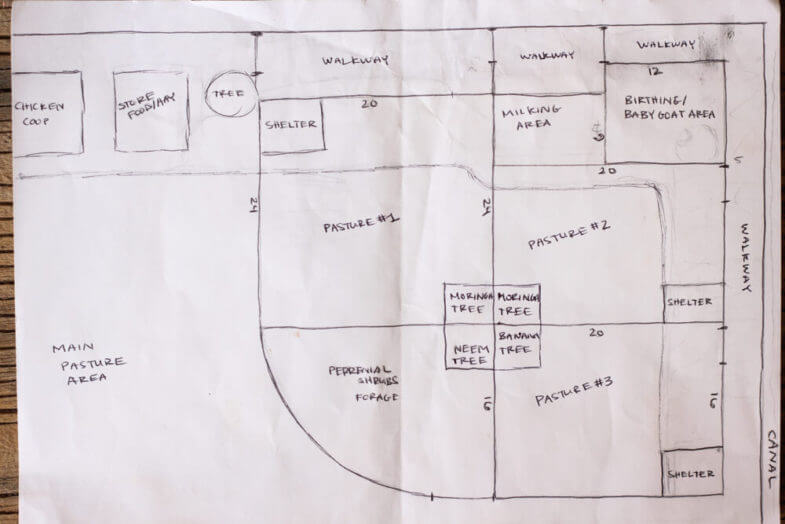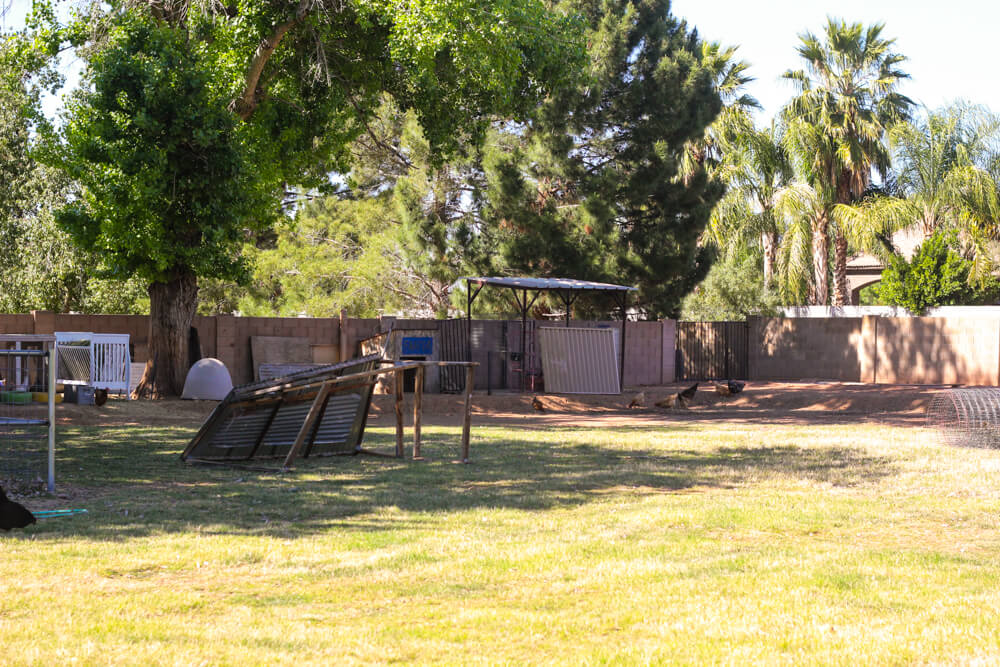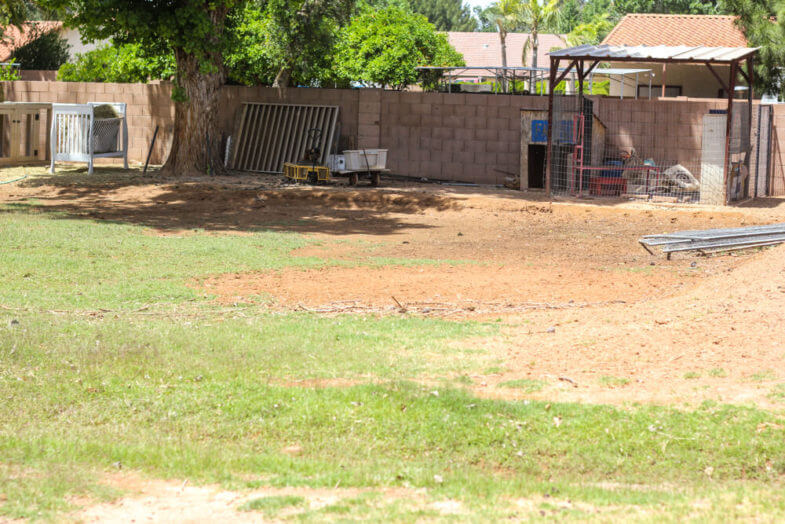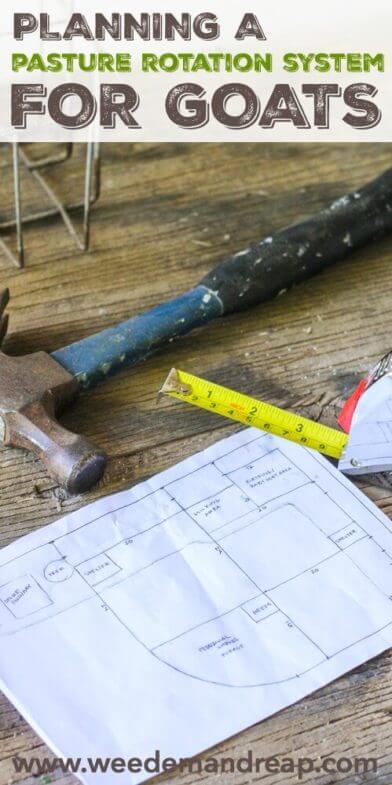You know you’re a serious goat farmer…
When you spend hours researching and planning an efficient pasture rotation area.
In my years owning goats, I’ve learned that raising a healthy herd of goats can come naturally if you understand their behavior and instincts.
Goats don’t eat grass.
At least they aren’t happy with grass alone. One of the most common misconceptions about goats is that they’ll mow your lawn. Spoiler Alert: They won’t.
You see, goats are browsers, not grazers. While a sheep, horse, or cow is content with a pasture full of grass, goats are different. Sure, they’ll nibble at grass, but they prefer variety.
People often call goats “picky,” but all goats are really doing is following their instincts. They thrive on a variety of bushes, weeds, trees, and the occasional grass. Consequently, when you give your goat variety in her diet, she produces more milk, has bright and healthy eyes, a shiny coat, and is free from worm infestations and other goat diseases that plague domesticated goats.
Permaculture is for PROS.
Permaculture is the development of agricultural ecosystems in a way that is sustainable and self-sufficient.
Instead of purchasing goats (or another animal) and trying to feed them a diet of 100% pellets while spending a good amount of your time dealing with worm growth, various health problems, and lower milk production (which is often counteracted by an increase in grain to unnaturally boost milk)… try moving to a more sustainable method of raising goats using permaculture methods.
You’ll be surprised at how well your goats will do with permaculture practices incorporated!
One of the best tried and true permaculture practice is pasture rotation. This means that instead of having one large area for your goats, you’ll divide it into smaller sections, then move them around anywhere from 1 day-1 week to each section.
While pasture rotation is often talked about for only grazing animals (animals that thrive on only grass), there are also some big benefits for incorporating it with your goats!
Pasture rotation for goats: Our plan.
 What we know about goats and pasture rotation:
What we know about goats and pasture rotation:
- Goats prefer a variety of plants, including grass, weeds, bushes, leaves, flowers.
- A common problem with raising goats is an overgrowth of worms. We know that worms in goats usually re-infest within 2-3 weeks by the goats placing their mouths in an area where they poop.
- Creating a healthy pasture involves a correct balance of nitrogen, meaning, too much poop will actually kill plants and grass instead of encouraging growth.
From my research of pasture forages for small ruminant animals, I knew that 3-4 areas would be best for a goat pasture rotation.
As you can see in the picture below, we will have 3 main goat pasture rotation areas with an additional area where we’ll grow perennial shrubs. They will also have access to a larger pasture, so this should give them a good combo of both.
Here’s how we’ll rotate the goats!
From April to October:
This is the time in Arizona when our Bermuda grass is thriving and green. We like to use our main pasture as much as possible. The sheep live on this pasture full-time during this season.
- Access to PASTURE #2 + MAIN PASTURE AREA for 1 day.
- Access to FORAGE PASTURE AREA + MAIN PASTURE AREA for 1 day.
- repeat above.
- Plant/Grow Corn from March-June, (animals will have access in July) Plant/Grow Corn from August-October in PASTURE #3
- Plant/Grow Wheat from March-June, (animals will have access in July) Plant/Grow Wheat from August-October in PASTURE #1
From November to March:
This is the time in Arizona when our Bermuda grass goes dormant and we are mainly feeding hay. We’ve found our main pasture does better if we keep the goats off of it during this time. We also keep the sheep with the goats and off the main pasture as well.
- Access to PASTURE #1 (goats will break down leftover wheat stalks) for 2-3 weeks.
- Access to PASTURE #3 (goats will break down leftover corn stalks) for 2-3 weeks.
- repeat above
- Plant/Grow Alfalfa & Pasture Mix in PASTURE #2.
- Plant/Grow Alfalfa & Pasture Mix as well as perennial shrubs in our FORAGE PASTURE AREA.
The alfalfa will be grown for our goats, and the corn/wheat will be mainly for us, with the goats and chickens getting some of the leftovers. I am also planting moringa and neem trees in the middle so they can reach up and eat leaves (or we can cut them off and feed to them). The moringa and neem trees have amazing health benefits and grow well here in our area! The neem tree also is great for natural worm control.
I’m still debating on giving up a banana pup to this area, but my goats love banana leaves, so I may grow one back here just for them. We are also pretty stoked about growing a variety of grains for our animals.
We recently demolished this area to be able to build our goat pasture rotation area and I can’t wait to get started with the fencing!
Choosing the correct pasture mix for goats.
Because we living in Arizona, we’ll be going with a Southwest Desert Pasture mix. You can learn more about how to choose the correct pasture seed mix for your area here.
The grass is always greener on the other side…
And this couldn’t be truer for goats. That’s why pasture rotation is such a great tool to use. Even if you have a smaller area, it’s a good idea to incorporate these practices even if for worm control only.
Have you ever tried to incorporate a pasture rotation system for your farm? I’d love to hear your experiences!

 What we know about goats and pasture rotation:
What we know about goats and pasture rotation:



A bountiful source of goat feed in Arizona is palm fronds. They are difficult to compost or chip, so they are not allowed in the green bins. Neighbors and landscapers are eager to give them away. We would hang them up and the goats go crazy for them (both dry & fresh). They eat all the leaflets leaving the spine behind, which has all sorts of uses in the garden.
Hello. What size is each pasture?
Hi Kisa-
It depends on how many animals you have and the space you can dedicate to them.
DaNelle’s entire area is one acre and she divides based on the number of goats she has. Each goat needs a minimum of 250 square feet.
Thank you -Bobbi (DaNelle’s Assistant)
What is a good way to set up a farm plan? We live on 3 acres but most of it is not flat. And a good bit is still wooded with a creek.
Hi Shanna-
This article may be able to help you: https://www.weedemandreap.com/backyard-farm-designs/
There is even a design for 2-3 acres.
I hope that helps!
Thank you -Bobbi (DaNelle’s Assistant)
This is such a great site and thanks so much for all your information. I recently purchased two nigerian Dwarfs, and they are 5 months old…I will be asking for lots of answers I am sure. Have a Goat Day out there Everybody!
Hello Danelle
thanks for all great info! we have about 1/2 acre small pasture, when horses were there i would go in and harrow the manure around occasionally, this of course would break up the manure and fertilize the grass. is this a good idea to do with the goat manure to help regenerate the grass? Do goats tend to poop in the same spot? I am excited to begin raising goats!
thanks
Hi Nate-
That’s fantastic you are raising goats! As for goat poop, while not as fun and exciting as the goats themselves, is not as much of a pain as that from our equine friends. Since goats are smaller and have pellet-like poop it really doesn’t pile up, but still is good for the grass. You won’t need to harrow the area your goats are in like you did when your horses were there. They don’t really have a specific place to poop, they kinda just “poop in the moment”. So wherever they are, there they go. However, if your goats have a spot they like to hang, such as by the main feeding area, under the shade of a nice tree, or wherever, there poop can accumulate. If this occurs, you can spread the poop around and even try moving the feed bowls/trough around a bit if that works for you. Try to keep your goats from eating where they poop, meaning don’t feed them straight on the ground, have a bowl, trough, anything that keeps food off the ground. Doing this reduces your chances of the worms really infecting your goats (although you still need to worm). The best thing you can do is practice pasture rotation as the article discusses. Thanks for reading and following. I hope this information helps! Happy Goating! -Bobbi
First off, thank you for such a great article. My question is how do I figure out how much square footage do I need per goat for a once a week rotation? I have a small 3 doe heard (Nubians) and only 1 acre of land I want to make the most of. I keep my goats in a barn at night and feed 80% organic alfalfa pellets.
I’ve heard Joel Salatin say it’s just a matter of trial & error. I would use an electric fence and put them in an area to see how they do:)
I am curious to know how big your pastures are. Do the numbers in your drawing along the edges of each pasture equal feet? I am thinking about starting pasture rotation as well but I will have to do fairly small pastures and I only have 2 goats. I live in hot and very humid south Texas and the worms thrive here.
Hi Stacy, the numbers on the drawing represent feet.
Hello! We live in Washington and are having a hard time finding a pasteur mix that will survive our weather.
You might want to call the company I link to in the article or check out http://www.theelliotthomestead.com I know she has a pasture mix and lives in WA
I don’t look at the date this was written….I am interested I planting this pasture mix, as O too live in Arizona. Marana to be exact. My Dad is a farmer and I asked him about the seed mix. He felt a couple of the varieties would end up dying because we are soooo hot. What’s your experience been? Thank you for the great article
Hi Christy! In the link above, each southwest pasture mix will show you where in the country it will perform best:)
I want to do something like this too. It looks fantastic! Thanks for sharing. What kinds of perennials do you have or do you want to plant in the foraging area? What plants have you noticed help or hinder the taste of the goat’s milk? Thanks for your help.
Hi Georgia,
I’m still deciding on the perennials that I want. I haven’t noticed anything really hinders the taste of the milk, so far!
Would you ever consider doing a walking video or photo tour of all the different areas you have? I admire how you have so efficiently used the space you have but I have such a hard time visualizing where everything is. Forgive me if you have done this and I didn’t catch it!
Yes, great idea! I’ll be doing one in about a week!
don’t have time now but have used pasture rotation until 4 years ago and am now in the middle of setting it back up. pasture 24 goats raise part of grain and am working on hay with large leaves and some grass to make them happy in the winter to suppliment their desire for trees. have found that they love sumac which got us through last year. hopefully by them clearing the trees i can grow my large leaf mix for them even experimenting with burdock.
I am so totally thankful for this info! Thanks for sharing and at great timing for us over in central maine where spring is thinking about sticking around (it did snow this week but hopefully that’ll be the end of that!) Great resources for our upcoming chickens, goats and sheep!